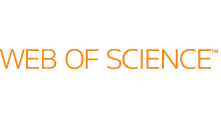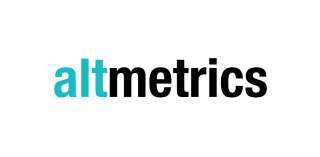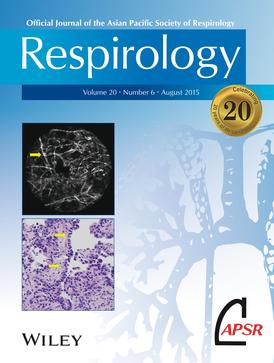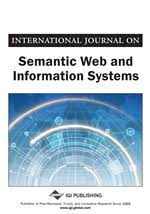PLOS Biology is a monthly peer-reviewed scientific journal covering all aspects of biology. Publication began on October 13, 2003. It is the first journal published by the Public Library of Science. The editor-in-chief is Nonia Pariente.
Scopus is an abstract and citation database launched by the academic publisher Elsevier in 2004.
The impact factor (IF) or journal impact factor (JIF) of an academic journal is a scientometric index calculated by Clarivate that reflects the yearly mean number of citations of articles published in the last two years in a given journal, as indexed by Clarivate's Web of Science.

Google Scholar is a freely accessible web search engine that indexes the full text or metadata of scholarly literature across an array of publishing formats and disciplines. Released in beta in November 2004, the Google Scholar index includes peer-reviewed online academic journals and books, conference papers, theses and dissertations, preprints, abstracts, technical reports, and other scholarly literature, including court opinions and patents.
Citation impact or citation rate is a measure of how many times an academic journal article or book or author is cited by other articles, books or authors. Citation counts are interpreted as measures of the impact or influence of academic work and have given rise to the field of bibliometrics or scientometrics, specializing in the study of patterns of academic impact through citation analysis. The importance of journals can be measured by the average citation rate, the ratio of number of citations to number articles published within a given time period and in a given index, such as the journal impact factor or the citescore. It is used by academic institutions in decisions about academic tenure, promotion and hiring, and hence also used by authors in deciding which journal to publish in. Citation-like measures are also used in other fields that do ranking, such as Google's PageRank algorithm, software metrics, college and university rankings, and business performance indicators.
The h-index is an author-level metric that measures both the productivity and citation impact of the publications, initially used for an individual scientist or scholar. The h-index correlates with success indicators such as winning the Nobel Prize, being accepted for research fellowships and holding positions at top universities. The index is based on the set of the scientist's most cited papers and the number of citations that they have received in other publications. The index has more recently been applied to the productivity and impact of a scholarly journal as well as a group of scientists, such as a department or university or country. The index was suggested in 2005 by Jorge E. Hirsch, a physicist at UC San Diego, as a tool for determining theoretical physicists' relative quality and is sometimes called the Hirsch index or Hirsch number.
Journal Citation Reports (JCR) is an annual publication by Clarivate. It has been integrated with the Web of Science and is accessed from the Web of Science Core Collection. It provides information about academic journals in the natural and social sciences, including impact factors. JCR was originally published as a part of the Science Citation Index. Currently, the JCR, as a distinct service, is based on citations compiled from the Science Citation Index Expanded and the Social Sciences Citation Index. As of the 2023 edition, journals from the Arts and Humanities Citation Index and the Emerging Sources Citation Index have also been included.

Neuropsychopharmacology is a monthly peer-reviewed scientific journal published by Nature Portfolio. It was established in 1987 and is an official publication of the American College of Neuropsychopharmacology. The journal covers all aspects of neuropsychopharmacology, including clinical and basic science research into the brain and behavior, the properties of agents acting within the central nervous system, and drug targeting and development. In addition to primary articles and reviews, the journal publishes Brainpod, a podcast highlighting content published in the journal and featuring interviews with the authorship team.
Journal ranking is widely used in academic circles in the evaluation of an academic journal's impact and quality. Journal rankings are intended to reflect the place of a journal within its field, the relative difficulty of being published in that journal, and the prestige associated with it. They have been introduced as official research evaluation tools in several countries.

The Web of Science is a paid-access platform that provides access to multiple databases that provide reference and citation data from academic journals, conference proceedings, and other documents in various academic disciplines. Until 1997, it was originally produced by the Institute for Scientific Information. It is currently owned by Clarivate.
The International Journal of Environmental Research and Public Health is a peer-reviewed open access scientific journal that was established in 2004 and is published by MDPI. The editor-in-chief is Paul B. Tchounwou. The journal covers all aspects of environmental health sciences and public health.
Metabolism: Clinical and Experimental is a monthly peer-reviewed medical journal covering all aspects of human metabolism. It was established in 1952 and is published by Elsevier. The editor-in-chief is Christos Socrates Mantzoros who has reinvigorated the journal during his tenure.
Methods of Information in Medicine is a peer-reviewed scientific journal covering research in medical informatics. It is an official journal of the International Medical Informatics Association, the European Federation for Medical Informatics, and the German Association for Medical Informatics, Biometry and Epidemiology. It is the oldest and longest running journal in its field.

In scholarly and scientific publishing, altmetrics are non-traditional bibliometrics proposed as an alternative or complement to more traditional citation impact metrics, such as impact factor and h-index. The term altmetrics was proposed in 2010, as a generalization of article level metrics, and has its roots in the #altmetrics hashtag. Although altmetrics are often thought of as metrics about articles, they can be applied to people, journals, books, data sets, presentations, videos, source code repositories, web pages, etc.

The Global Business Review is a peer-reviewed academic journal covering all aspects of management. Global Business Review is published by International Management Institute in association with SAGE Publications . It publishes articles which are of a multi-disciplinary, interdisciplinary, and internationally significant nature. This is a refereed journal with an emphasis on Asian and Indian perspectives. Papers are reviewed by eminent academicians and professionals from various places of the world.

Respirology is a peer-reviewed medical journal published by Wiley on behalf of the Asian Pacific Society of Respirology. The word respirology is derived from the Latin root respirare, "to breathe" and the Greek root logos, "knowledge". The journal covers clinical respiratory biology and disease, including epidemiology, intensive and critical care medicine, pathology, physiology, thoracic surgery, and general medicine, as it relates to respiratory biology and disease.
The IEEE Transactions on Learning Technologies (TLT) is a peer-reviewed scientific journal covering advances in the development of technologies for supporting human learning. It was established in 2008 and is published by the IEEE Education Society. The current editor-in-chief is Minjuan Wang of San Diego State University. Formerly, the journal was edited by Mark J.W. Lee of the Charles Sturt University (2019-2022), Wolfgang Nejdl of the University of Hannover (2008–2012), and by Peter Brusilovsky of the University of Pittsburgh (2013–2018).

The International Journal on Semantic Web and Information Systems (IJSWIS) is a quarterly peer-reviewed academic journal covering the semantic web and information systems. It was established in 2005 and is published by IGI Global. The editor-in-chief is Brij B. Gupta, Who is a professor at Asia University, Taiwan, and Director of the International Center for AI and Cyber Security Research and Innovations. Brij B. Gupta is also serving as Member-in-Large, Board of Governors, IEEE Consumer Technology Society (2022–2024) and also included in the list of 2022 Highly Cited Researchers in Computer Science by Clarivate.

Archives of Academic Emergency Medicine is a peer-reviewed open-access medical journal covering emergency medicine. It was originally established as Emergency in 2013, changing to the current name in 2019, and is published by Shahid Beheshti University of Medical Sciences. The journal has been ranked as a Q1 journal in the SCImago journal ranking since 2021. It has also received an impact factor of 5.4 for the first time in the 2023 Journal Citation Reports (JCR) release for the articles published in 2022, making it a Q1 journal. Based on 2022 Journal Impact Factors, the journal was ranked first in Asia and fifth worldwide among journals published in the field of emergency medicine. It ranked fourth worldwide when considering Journal Impact Factors without self-citations.

Clarivate Plc is a British-American publicly traded analytics company that operates a collection of subscription-based services, in the areas of bibliometrics and scientometrics; business / market intelligence, and competitive profiling for pharmacy and biotech, patents, and regulatory compliance; trademark protection, and domain and brand protection. In the academy and the scientific community, Clarivate is known for being the company that calculates the impact factor, using data from its Web of Science product family, that also includes services/applications such as Publons, EndNote, EndNote Click, and ScholarOne. Its other product families are Cortellis, DRG, CPA Global, Derwent, MarkMonitor, CompuMark, and Darts-ip, and also the various ProQuest products and services.














